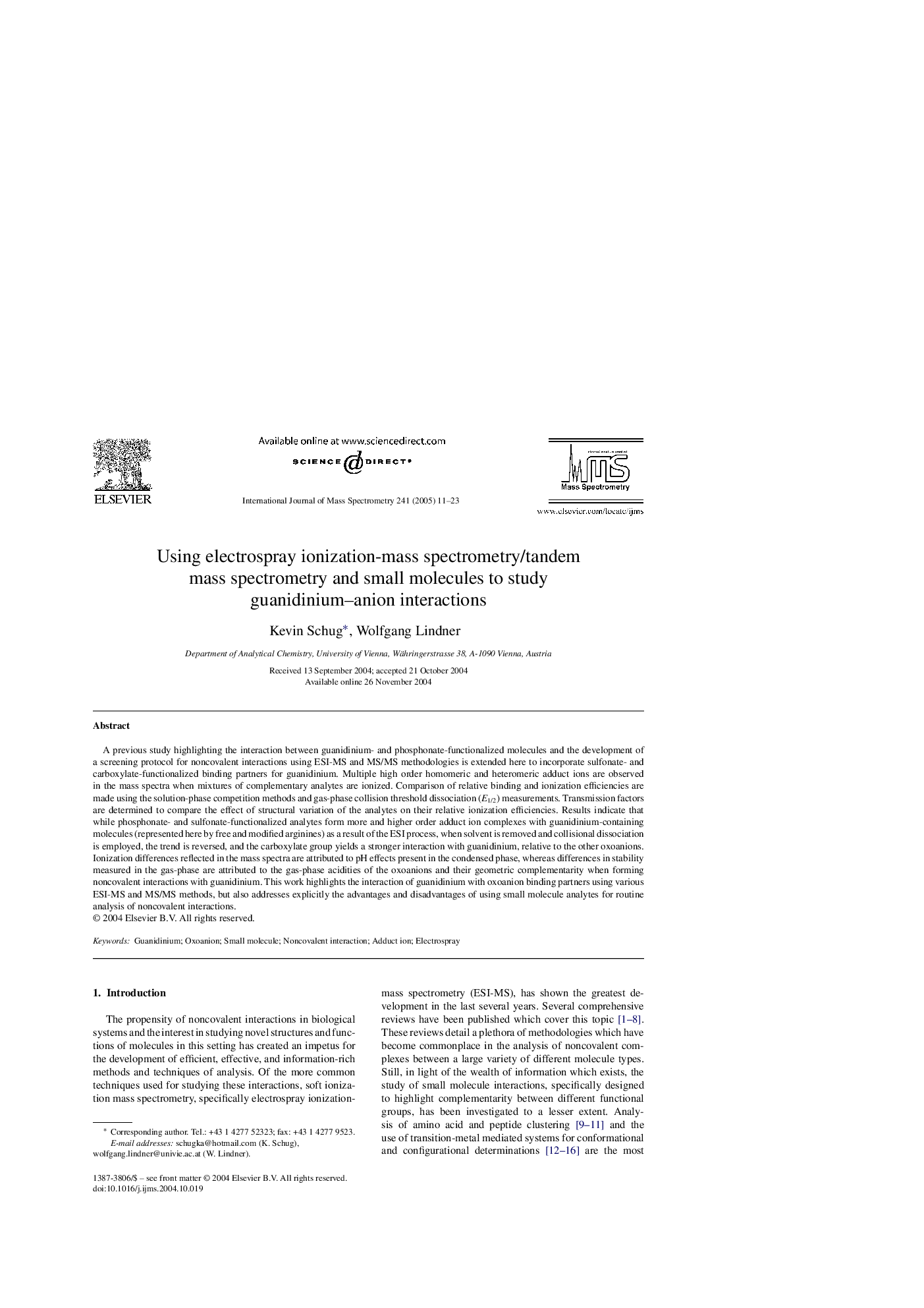| Article ID | Journal | Published Year | Pages | File Type |
|---|---|---|---|---|
| 9746774 | International Journal of Mass Spectrometry | 2005 | 13 Pages |
Abstract
A previous study highlighting the interaction between guanidinium- and phosphonate-functionalized molecules and the development of a screening protocol for noncovalent interactions using ESI-MS and MS/MS methodologies is extended here to incorporate sulfonate- and carboxylate-functionalized binding partners for guanidinium. Multiple high order homomeric and heteromeric adduct ions are observed in the mass spectra when mixtures of complementary analytes are ionized. Comparison of relative binding and ionization efficiencies are made using the solution-phase competition methods and gas-phase collision threshold dissociation (E1/2) measurements. Transmission factors are determined to compare the effect of structural variation of the analytes on their relative ionization efficiencies. Results indicate that while phosphonate- and sulfonate-functionalized analytes form more and higher order adduct ion complexes with guanidinium-containing molecules (represented here by free and modified arginines) as a result of the ESI process, when solvent is removed and collisional dissociation is employed, the trend is reversed, and the carboxylate group yields a stronger interaction with guanidinium, relative to the other oxoanions. Ionization differences reflected in the mass spectra are attributed to pH effects present in the condensed phase, whereas differences in stability measured in the gas-phase are attributed to the gas-phase acidities of the oxoanions and their geometric complementarity when forming noncovalent interactions with guanidinium. This work highlights the interaction of guanidinium with oxoanion binding partners using various ESI-MS and MS/MS methods, but also addresses explicitly the advantages and disadvantages of using small molecule analytes for routine analysis of noncovalent interactions.
Related Topics
Physical Sciences and Engineering
Chemistry
Analytical Chemistry
Authors
Kevin Schug, Wolfgang Lindner,
